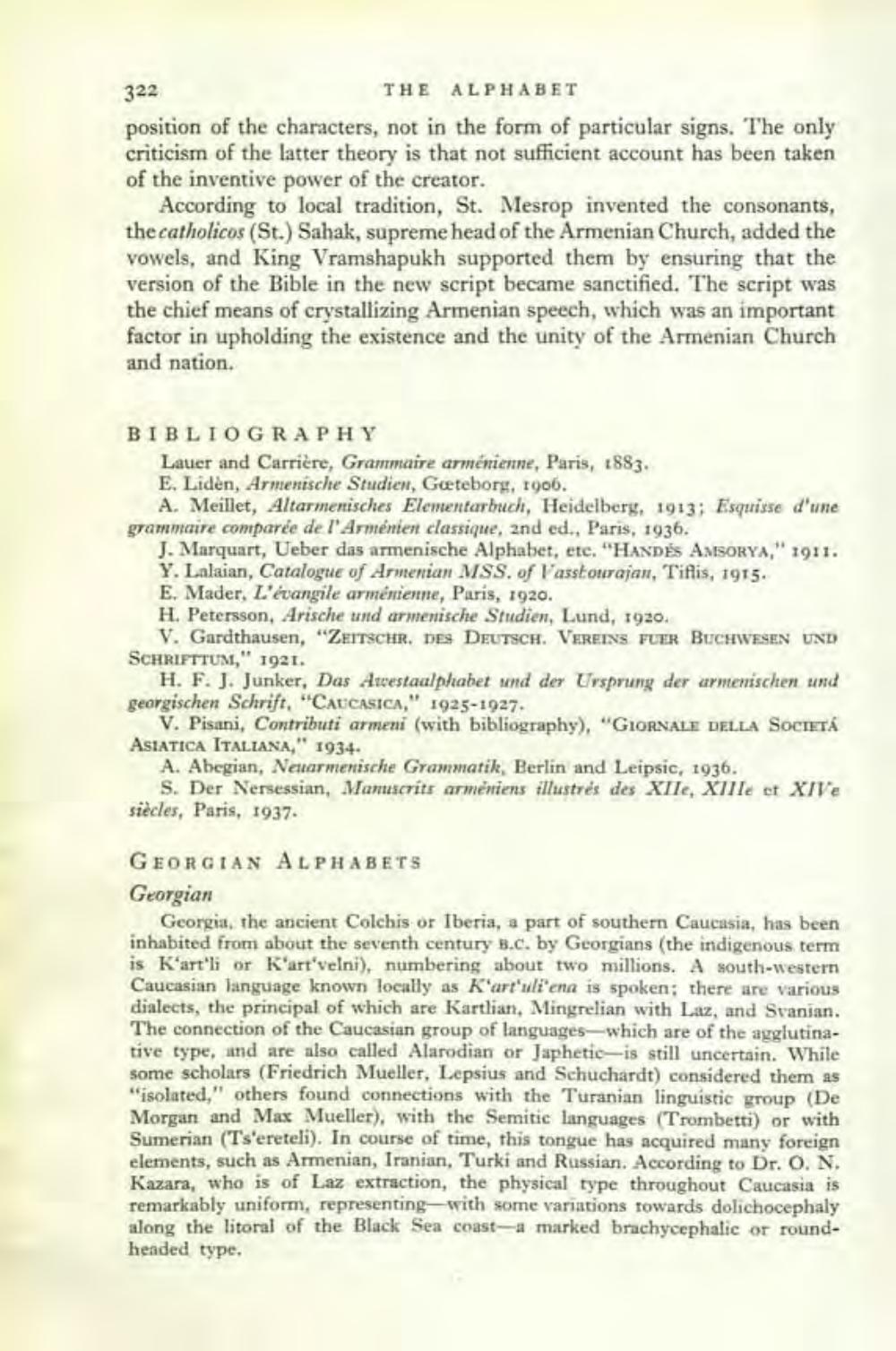________________
322
THE ALPHABET position of the characters, not in the form of particular signs. The only criticism of the latter theory is that not sufficient account has been taken of the inventive power of the creator.
According to local tradition, St. Mesrop invented the consonants, the catholicos (St.) Sahak, supreme head of the Armenian Church, added the vowels, and King Vramshapukh supported them by ensuring that the version of the Bible in the new script became sanctified. The script was the chief means of crystallizing Armenian speech, which was an important factor in upholding the existence and the unity of the Armenian Church and nation.
BIBLIOGRAPHY
Lauer and Carrière, Grammaire arménienne, Paris, 1883. E. Lidèn, Armenische Studien, Getebork, 1906.
A. Meillet, Altarmenisches Elementarbuch, Heidelberg, 1913; Esquisse d'une grammaire comparée de l'Arménien classique, and ed., Paris, 1936.
J. Marquart, Ueber das armenische Alphabet, etc, "HANDÉS AMISORYA," 7911. Y. Lalaian, Catalogue of Armenian MSS. of Vasstourajan, Tiflis, 1915. E. Mader, L'évangile arménienne, Paris, 1920. H. Petersson, Arische und armenische Studien, Lund, 1920.
V. Gardthausen, "ZEITSCHR. DES DEUTSCH VEREINS FUER BUCHWESEN UND SCHRIFTTUM," 1921.
H. F. J. Junker, Das Arvestaalphaber und der Ursprung der armenischen und georgischen Schrift, "CAUCASICA," 1925-1927.
V. Pisani, Contributi armeni (with bibliography), "GIORNALE DELLA SOCIETA ASIATICA ITALIANA," 1934.
A. Abegian, Natarmenische Grammatik, Berlin and Leipsic, 1936.
S. Der Nersessian, Manuscrits arméniens illustres des XII, XIIIe et XIV siècles, Paris, 1937.
GEORGIAN ALPHABETS Georgian
Georgia, the ancient Colchis or Iberia, a part of southern Caucasia, has been inhabited from about the seventh century B.C. by Georgians (the indigenous term is K'art'li or R'art'velni), numbering about two millions. A south-western Caucasian language known locally as K'art'uliena is spoken; there are various dialects, the principal of which are Kartlian, Mingrelian with Laz, and Svanian. The connection of the Caucasian group of languages which are of the agglutinative type, and are also called Alarodian or Japhetic-is still uncertain. While some scholars (Friedrich Mueller, Lepsius and Schuchardt) considered them as "isolated," others found connections with the Turanian linguistic group (De Morgan and Max Mueller), with the Semitic languages (Trombetti) or with Sumerian (Ts'ereteli). In course of time, this tongue has acquired many foreign elements, such as Armenian, Iranian, Turki and Russian. According to Dr. O. N. Kazara, who is of Laz extraction, the physical type throughout Caucasia is remarkably uniform, representing with some variations towards dolichocephaly along the litoral of the Black Sea coast-a marked brachycephalic or roundheaded type.




